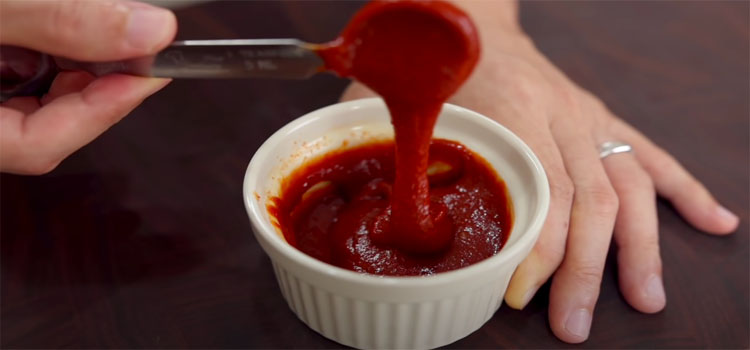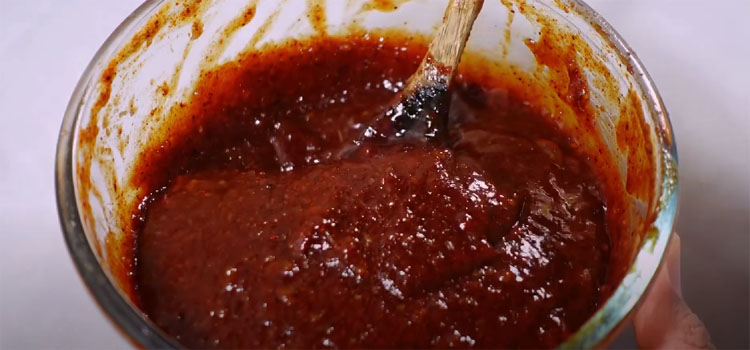Last Updated on September 16, 2024 by Shari Mason
I’m curious about **Korean food** and **wonder** how long **gochujang** stays good in the fridge. This key ingredient in Korean dishes adds a spicy and savory kick to your food.
Let’s look into the lifespan of gochujang in the refrigerator and tips for optimal storage. Your tastebuds and your dishes will thank you.
How Long Is Gochujang Good For In The Fridge?


Gochujang [1], a staple in Korean cuisine, boasts impressive longevity when stored in the fridge. When kept in a tightly sealed container, this spicy chili paste can maintain its optimal flavor and consistency for up to 2 years.
“I love food, all types of food. I love Korean food, Japanese, Italian, French. In Australia, we don’t have distinctive Australian food, so we have food from everywhere all around the world. We’re very multicultural, so we grew up with lots of different types of food.”
– Hugh Jackman, Australian Actor
While the paste might experience a slight change in color over extended periods, this is a result of natural oxidation and doesn’t indicate spoilage.
However, as always, be vigilant for signs of mold or an unusual odor, suggesting it’s time to replace your gochujang.
Also Read:
- Substitute For Soy Paste
- Substitute For Frank’s Hot Sauce
- How To Make Spicy Mayo Without Hot Sauce?
- Is It Bad To Eat Too Much Kimchi?
- How Long Can You Keep Kimbap Out?
Can You Freeze Gochujang?
Yes. Freezing gochujang is a viable method to extend its shelf life even further. This Korean chili paste retains its rich flavor and vibrant color when stored in an airtight container or heavy-duty freezer bag.
While gochujang remains somewhat pliable even when frozen, allowing for easy portioning, it’s essential to ensure minimal exposure to air to prevent freezer burn.
When ready to use it, thaw it in the refrigerator and stir well before incorporating it into your dishes.
Can It Be Left Out?
While robust in its composition due to fermentation [2], Gochujang should ideally be refrigerated once opened to maintain its optimal flavor and prevent spoilage.
Leaving it out for a short time, like during meal preparation, will help. However, extended periods at room temperature can compromise its quality and freshness.
Always check for any off smells or mold growth if left out for a prolonged period. Storing gochujang in the fridge is advised for the best longevity and taste.
Signs That It Might Have Gone Bad


- Change in Color: Fresh gochujang has a vibrant red hue. If it starts turning darker brown or exhibits any discoloration, it’s a sign that it might be past its prime.
- Off or Sour Smell: Gochujang has a distinct spicy and slightly sweet aroma. Any sour or unpleasant odors suggest it may have gone bad.
- Mold Growth: While fermented foods often have a long shelf life, they’re not immune to mold. If you notice any fuzzy, white, green, or black spots, it’s time to discard the container.
- Separation or Change in Texture: A slight separation can be expected, but if the gochujang has become watery or there’s a significant amount of liquid on top, it may have spoiled. Similarly, if it becomes excessively dry or complex, it might be unsafe to consume.
- Altered Taste: If the sauce tastes sour, overly bitter, or just not right, it’s a sign that the gochujang has likely gone bad.
- Swollen or Bulging Container: This is a sign of bacterial activity producing gas. If a sealed container of gochujang bulges, it clearly indicates spoilage and should be discarded.
“From fiery beginnings to flavor-packed endings, gochujang dances on taste buds and lingers in the fridge. As months pass, its vibrancy may wane, but its essence remains a reminder of culinary journeys well savored.”
– Eat Pallet Restaurant & Food Advice
Tips On How To Store Gochujang
- Seal Tightly: Always ensure the container is sealed tightly to prevent air from getting in and drying out the paste.
- Refrigerate After Opening: While unopened gochujang can be stored in a cool, dry place, once opened, it should be kept in the refrigerator to maintain its freshness and prevent spoilage.
- Please keep Away from Direct Light: Store it in a dark spot or in its original box to avoid exposure to light which can degrade its quality.
- Use Clean Utensils: Always use clean, dry spoons or utensils when scooping out the paste to prevent introducing contaminants.
- Avoid Cross-contamination: Avoid mixing other foods or sauces with gochujang in its original container.
- Transfer to an Airtight Container: If the original packaging is damaged or doesn’t seal well, transfer the gochujang to an airtight container.
- Check Regularly: While gochujang has a long shelf life, it’s still a good practice to check it periodically for any signs of spoilage.
- For Extended Storage, Consider Freezing: If you have a large quantity and want to store it for an extended period, freezing it in smaller, usable portions can be an option.
- Label with Date: If transferring to a new container or freezing, label the gochujang with the date of purchase or opening to keep track of its age.
- Avoid Storing Near Strong Odor Foods: Gochujang can absorb odors, so it’s best not to store it near foods with strong smells, like onions or garlic, in the fridge.
FAQs
u003cstrongu003eCan you eat gochujang without cooking?u003c/strongu003e
Yes, you can eat gochujang without cooking; it’s often used as a raw condiment or ingredient in various dishes.
u003cstrongu003eHow long does Gochugaru last after opening?u003c/strongu003e
After opening, gochugaru (Korean red pepper flakes) can last up to a year when stored in a cool, dry place and kept from moisture.
Key Takeaways
When stored properly in the refrigerator, gochujang can maintain its optimal flavor and texture for up to two years. However, for the best taste experience, consuming it within this timeframe is advisable.
Beyond that, while it might still be safe to eat, the potency and richness of its flavor could diminish. Proper storage is critical to ensuring the longevity and quality of this robust Korean chili paste.
References:
- https://www.bonappetit.com/recipes/slideshow/gochujang-recipes
- https://www.britannica.com/science/fermentation
- Can You Put an AC Unit in the Kitchen? - September 27, 2024
- What Cheese Does Olive Garden Use? Discover Their Signature - September 27, 2024
- How to Cancel a Pizza Hut Order? Quick & Easy Guide - September 24, 2024


